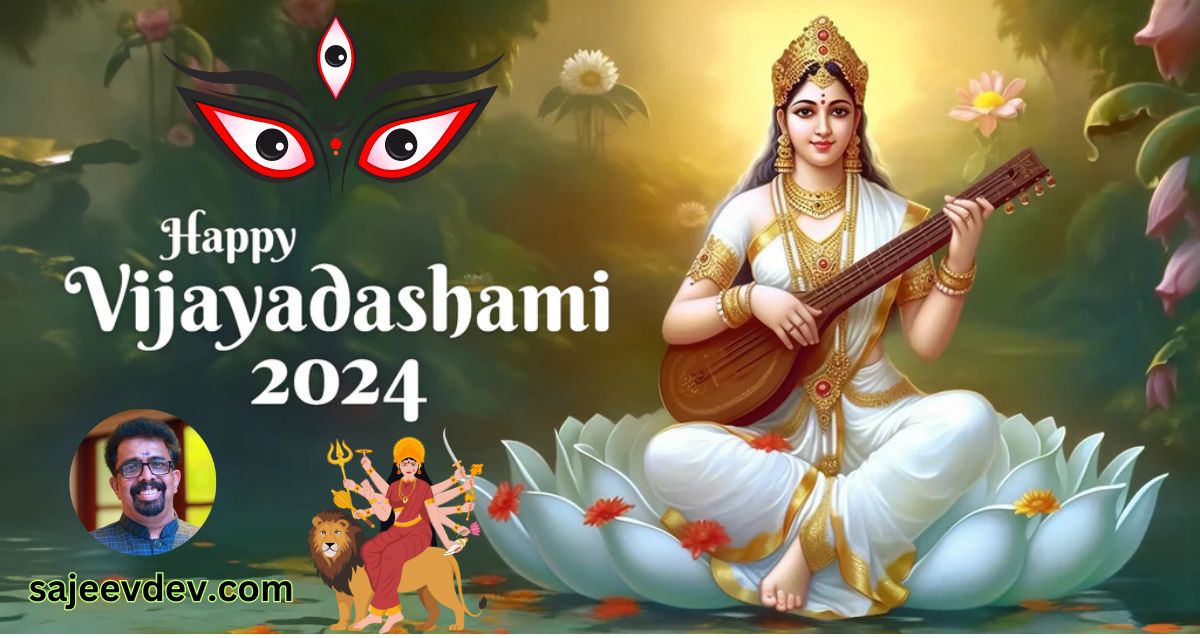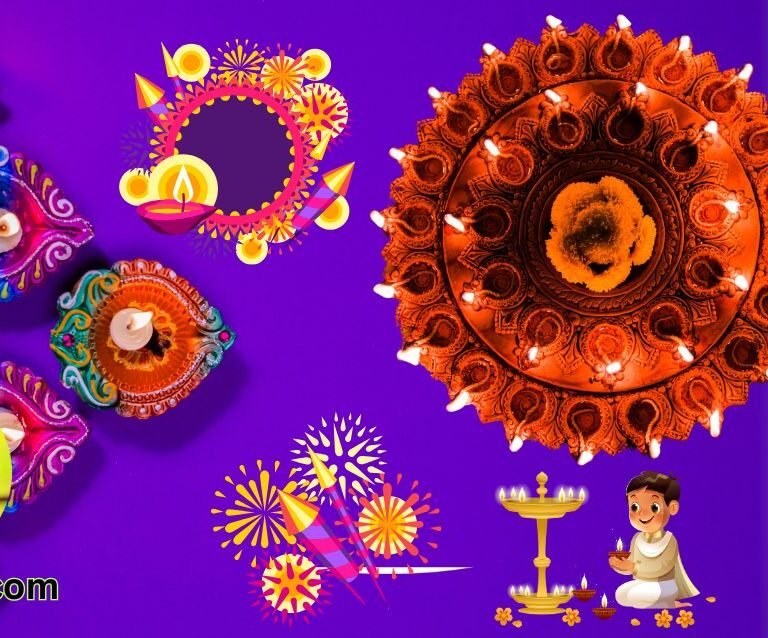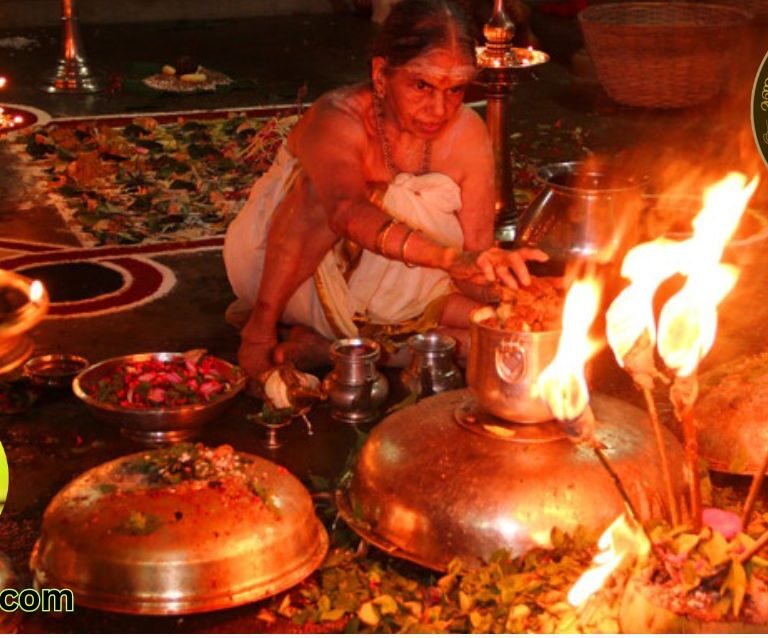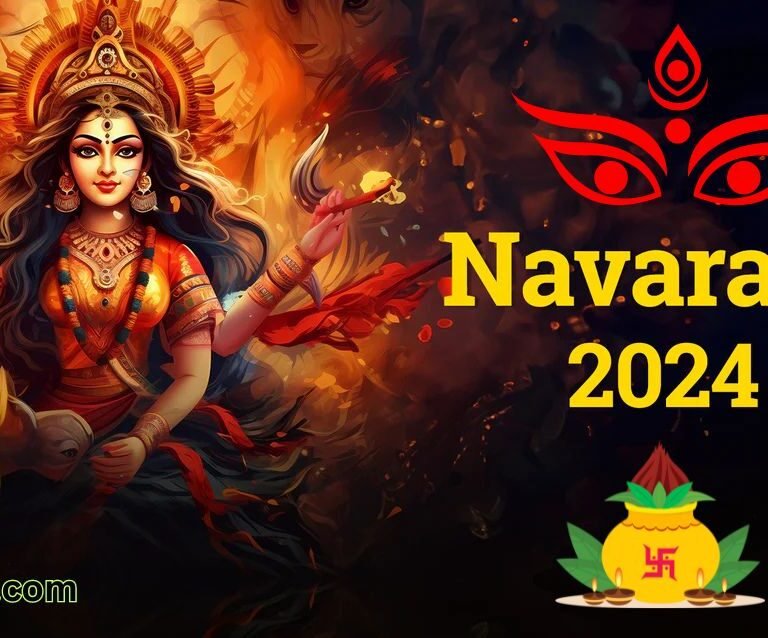Vijayadashami, also referred to as Dussehra, is an important Hindu festival celebrated with great enthusiasm across India and Nepal
Vijayadashami, also referred to as Dussehra, is an important Hindu festival celebrated with great enthusiasm across India and Nepal. The festival, which typically falls in September or October, marks the conclusion of Navratri, a nine-night celebration dedicated to Goddess Durga. Vijayadashami symbolizes the victory of good over evil, commemorating Lord Rama’s triumph over the demon king Ravana, as narrated in the epic Ramayana. This narrative highlights fundamental moral values inherent in Hindu tradition, emphasizing the belief that righteousness ultimately prevails.
Throughout the festival, various cultural events and rituals are conducted that not only honor the heroics of deities but also reinforce the teachings of dharma, or duty. Communities come together to partake in elaborate pujas (prayers) and engage in vibrant processions, showcasing traditional dances, music, and reenactments of mythological stories. One of the most visually stunning elements of Vijayadashami is the effigy of Ravana, which is typically burned in a grand display, representing the destruction of evil forces.
The significance of Vijayadashami extends beyond religious observances; it fosters a sense of community and togetherness among families and friends. It is a time for reflection and renewal, prompting individuals to contemplate their personal battles against negativity and to embrace positive changes in their lives. As families gather to celebrate, the festival also serves as an opportunity to pass down cultural traditions, reinforcing the collective identity of various regional communities.
Ultimately, the celebration of Vijayadashami is a vibrant tapestry of spirituality, culture, and social bonding that resonates with people of all ages, uniting them in the timeless message of hope and resilience against adversity.
Historical Significance of Vijayadashami
Vijayadashami, also known as Dussehra, is a festival of immense historical and cultural significance in Hindu tradition. Its origins can be traced back to ancient Hindu mythology, embodying the eternal struggle between good and evil. The festival is primarily linked to two prominent narratives: the triumph of Goddess Durga over the buffalo demon Mahishasura and Lord Rama’s victory over the demon king Ravana.
The story of Goddess Durga symbolizes the empowerment of the divine feminine. According to mythology, Mahishasura, the demon, had gained the ability to change forms, making him nearly invincible. However, the gods, unable to tolerate his tyranny, combined their energies to create Goddess Durga. She embodies strength, courage, and righteousness, ultimately battling and defeating Mahishasura, representing the victory of good over evil. This triumph is celebrated annually as a reminder of the power of virtue and the importance of standing against oppression.
Similarly, the narrative of Lord Rama signifies the values of duty, honor, and righteousness. The epic tale from the Ramayana recounts how Ravana, despite his great strength and intelligence, became a symbol of evil due to his unyielding desire and ego. Lord Rama, with the help of his allies, including Hanuman and his brother Lakshmana, undertook a monumental mission to rescue his wife Sita, illustrating the essence of dharma (duty). The eventual defeat of Ravana not only marks a significant event in Hindu mythology but also serves as a moral teaching that righteousness prevails against wrongful acts.
In essence, Vijayadashami stands as a powerful reminder of the universal principle of good overcoming evil. The festival’s rich historical significance encourages individuals to reflect on their values and the importance of ethical conduct in daily life.
Regional Variations in Celebrations
Vijayadashami, also known as Dussehra, is celebrated with great fervor across various regions of India and Nepal, reflecting distinct cultural nuances and traditions. In the northern states, particularly in Uttar Pradesh and Bihar, the festival commemorates the victory of Lord Rama over the demon king Ravana. Grand processions are held, featuring effigies of Ravana, which are burned at dusk, signifying the triumph of good over evil. This ritual is accompanied by dramatic performances of the Ramayana, drawing large crowds and fostering a sense of community.
In contrast, the southern part of India, especially Karnataka and Andhra Pradesh, observes Vijayadashami as a time to honor the goddess Durga. In these regions, festivities are characterized by elaborate decorations and vibrant processions that include traditional music and dance. Families set up ‘Golu’ displays, which are decorative arrangements of dolls and figurines that depict various aspects of life, spirituality, and mythology. On this day, children receive blessings for knowledge and prosperity, reflecting the festival’s educational significance.
In eastern India, notably in West Bengal, Vijayadashami marks the culmination of Durga Puja, an elaborate celebration of goddess Durga’s victory over the buffalo demon Mahishasura. The day is marked by immersing idols of Durga in rivers or other water bodies, which symbolizes her return to her celestial abode. The atmosphere is filled with music, dance, and festive cravings, showcasing a deep cultural reverence for the divine feminine.
The western regions of India, particularly Gujarat and Rajasthan, embrace Vijayadashami through vibrant folk traditions and rituals. In these states, the festival often coincides with the concluding days of Navratri, culminating in dance forms like Garba and Dandiya. Celebrants dress in colorful attire, celebrating together, thus fostering unity and joy in the community.
In Nepal, the festival is celebrated as Dashain, signifying the same themes of victory and renewal. The festivities span several days, where the goddess Durga is worshipped, and family reunions are a central theme. The rituals include animal sacrifices and receiving blessings from elders, showcasing a blend of devotion and familial respect. Through these varied celebrations, Vijayadashami exemplifies a rich tapestry of cultural heritage, emphasizing the universal theme of good defeating evil.
The Significance of Durga Puja
Durga Puja, one of the most significant festivals in the Indian subcontinent, holds immense cultural and spiritual importance, especially in the context of Vijayadashami. This annual celebration marks the worship of Goddess Durga, who symbolizes the victory of good over evil. The festival culminates in Vijayadashami, a day that not only marks the end of the festivities but also the victory of the divine over demonic forces, as embodied by the goddess’s triumph over the mighty buffalo demon, Mahishasura.
The essence of Durga Puja lies in its representation of protection, virtue, and the renewal of hope. Throughout the festival, devotees engage in various rituals that honor the goddess and invoke her blessings for strength and guidance. These practices reflect the broader themes of the festival, wherein Durga is revered not just as a warrior but also as a protector of dharma, the moral order of the universe. In this way, the festival fosters a communal spirit, uniting individuals in a shared reverence for divinity.
Durga Puja is also a time for reflection on moral values and the importance of righteousness. As people come together to celebrate, they are reminded of the virtues that the goddess represents. The richness of the festivities, including intricate idols, traditional dances, and cultural performances, enhances this spirit, creating an atmosphere of joy and devotion. Furthermore, the teachings derived from the festival serve as a guiding light, inspiring individuals to overcome their personal and collective challenges, much like the goddess herself.
In conclusion, the significance of Durga Puja extends beyond its religious observance; it is a celebration of the triumph of goodness over malevolence, encouraging individuals to embody the values of courage, righteousness, and community. As such, the observance of Vijayadashami acts as a reaffirmation of the faith in the victory of light over darkness and the enduring presence of divine protection in daily life.
Ramlila and the Northern Celebrations
Ramlila, an important cultural event celebrated predominantly in northern India, serves as a dramatic representation of the ancient epic, the Ramayana. This traditional performance embodies the essence of the epic narrative, bringing alive the timeless tale of Lord Rama, Sita, and the demon king Ravana. The festivities of Ramlila commence weeks before Vijayadashami, with various local troupes performing in open-air theatres throughout towns and villages. These performances not only entertain but also educate audiences about moral values and the ethos of dharma, as showcased in the epic.
The enactment of Ramlila culminates on Vijayadashami, symbolizing the peak of its celebrations. On this day, the audience witnesses the final act where Lord Rama, played by an actor dressed in traditional attire, confronts and ultimately defeats Ravana, emphasizing the triumph of good over evil. This significant moment resonates with the essence of Vijayadashami, reminding attendees that righteousness and virtue will always prevail against malevolence and injustice. The victory is celebrated with great fervor and enthusiasm, as the effigies of Ravana, his son Meghnath, and brother Kumbhkaran are set ablaze in various locations, illuminating the night sky with flames and fireworks.
In addition to its theatrical aspects, Ramlila serves as a community gathering that fosters unity and cultural heritage among spectators. Families and friends come together to savor the performances, reinforcing their bonds and enhancing the communal spirit. With time, this tradition has evolved, with artistic interpretations drawing contemporary relevance while remaining deeply rooted in the rich tapestry of Indian culture. As Ramlila concludes, the essence of Vijayadashami shines brightly, as it reaffirms the enduring belief in the victory of good, making it an integral part of the cultural fabric in northern India.
Ritual Practices and Observances
Vijayadashami, also known as Dussehra, is celebrated with a myriad of rituals and observances that emphasize the triumph of good over evil. Central to the festivities is the ceremonial immersion of idols, which reflects the transition from an earthly representation to a divine blessing. This practice involves washing away the physical manifestations of deities, primarily Goddess Durga, in rivers or lakes, symbolizing the acceptance of the divine’s return to the heavens. It is a time of reflection and gratitude, allowing participants to reconnect with the spiritual significance of the festival.
In addition to the immersion of idols, one of the most visually striking practices is the burning of effigies of Ravana, the demon king from the epic Ramayana. This ritual represents the destruction of evil and the celebration of righteousness. Large effigies filled with firecrackers are erected in public spaces, and the act of setting them ablaze captures the collective spirit of the community, reinforcing the message that good ultimately prevails. The flames and smoke create a dramatic crescendo, drawing the attention of onlookers and fostering a sense of unity among the participants.
Communal festivities play an essential role in enriching the Vijayadashami experience. These gatherings foster social bonds, as families and friends come together to partake in celebrations, feasts, and cultural performances. People participate in traditional dances, music, and storytelling sessions that echo the moral narratives of the past. Through these practices, Vijayadashami not only signifies the triumph of good but also strengthens communal ties and cultural heritage. The observances of this festival serve as a reminder of shared values and collective hope for a world free from malevolence, inviting people to celebrate unity in diversity.
Symbolism and Themes of Vijayadashami
Vijayadashami, also known as Dussehra, embodies significant symbolism that resonates deeply within the context of Hindu philosophy and spirituality. At its core, the festival celebrates the triumph of good over evil, a theme that is prevalent in many religious and cultural narratives around the world. The victory of Lord Rama over the demon king Ravana, as depicted in the epic Ramayana, serves as the central narrative driving the festivities. This event symbolizes righteousness prevailing, reinforcing the importance of dharma—righteousness or duty—over adharma, which refers to the moral and ethical chaos associated with evil.
Moreover, Vijayadashami reflects the cyclical nature of life, which is an essential concept in Hindu thought. The festival signifies the end of one cycle and the beginning of another, mirroring the natural rhythms of creation, preservation, and dissolution that govern existence. This cyclical perspective emphasizes that life involves both victories and challenges, encouraging individuals to embrace both aspects as integral to their spiritual journey. The rituals and festivities of Vijayadashami serve as a reminder that while struggles and adversities may be present, they are often necessary steps towards personal and collective growth.
The themes of renewal and rebirth are also integral to this festival. As the monsoon season concludes, Vijayadashami marks a time for new beginnings, inviting devotees to reflect on their lives and renew their commitments to righteousness. This theme is particularly resonant in various regional celebrations within India, where the festival may include diverse customs but ultimately conveys the same philosophical underpinnings. The acting out of these stories through theater and dance invites participants and spectators alike to internalize the lessons of the past, promoting a collective understanding of the importance of ethical living and moral integrity.
Preparations for Diwali
The festival of Vijayadashami, often celebrated with great fervor, heralds the imminent arrival of Diwali, the Festival of Lights. As one of the most significant festivals in Hindu culture, Diwali symbolizes the victory of light over darkness and good over evil. The preparations for this much-anticipated celebration begin immediately after Vijayadashami, as families across India and the world engage in various activities to usher in the joyous occasion.
In many households, the atmosphere transforms as vibrant decorations are set up to welcome the festival. Colorful rangoli designs adorn doorsteps, symbolizing prosperity and inviting positive energy. Families often gather to create intricate patterns using colored powders, rice, and flower petals. This art form not only showcases creativity but also serves as a reminder of the community spirit prevalent during the festival season.
Moreover, Vijayadashami marks the beginning of a shopping spree, where individuals procure new clothes, gifts, and decorations in preparation for Diwali. Markets become bustling hubs filled with shoppers searching for traditional sweets, diyas (oil lamps), and colorful lights. The aroma of festive delicacies wafts through the air as families begin to prepare traditional recipes that will be shared during Diwali gatherings. This aspect of preparation emphasizes the importance of togetherness and rekindling familial bonds.
Culturally, the connection between Vijayadashami and Diwali encompasses rituals and customs passed down through generations. Preparing for Diwali involves performing pujas (prayer rituals) intending to honor Lakshmi, the goddess of wealth, and Ganesha, the remover of obstacles. These ceremonies often commence a few days after Vijayadashami, signifying a fresh start and the cleansing of one’s spirit. Thus, the day after Vijayadashami kicks off a series of festive preparations, setting the stage for a celebratory culmination known as Diwali.
The Universal Message of Vijayadashami
The festival of Vijayadashami holds a significant place in the cultural and spiritual fabric of society, symbolizing the eternal struggle between good and evil. This celebration not only commemorates the victory of Lord Rama over the demon king Ravana in the epic Ramayana but also resonates with various narratives around the world that highlight the triumph of righteousness. The stories and traditions associated with Vijayadashami serve to remind individuals of the pressing values of hope, justice, and moral integrity in a world that often faces turmoil.
In contemporary society, the universal message of Vijayadashami transcends religious boundaries, encouraging a collective reflection on the enduring nature of good. As people observe this festival, they are invited to contemplate their own lives and the choices they make in the face of challenges. Such reflection fosters an environment where ethical conduct and virtuous behavior are upheld as ideals. These values are crucial in the current climate, where divisions can often overshadow shared humanity.
The significance of Vijayadashami extends beyond the mere celebration of an ancient story; it embodies the hope that good will prevail and that individuals, through their actions, can contribute to a just and equitable society. This festival serves as an annual reminder to engage in acts of kindness, compassion, and integrity, reinforcing the belief that everyone has the capacity to effect change. Ultimately, Vijayadashami invites people to participate in the ongoing narrative of goodness, inspiring generations to come with its message of resilience and empowerment.









